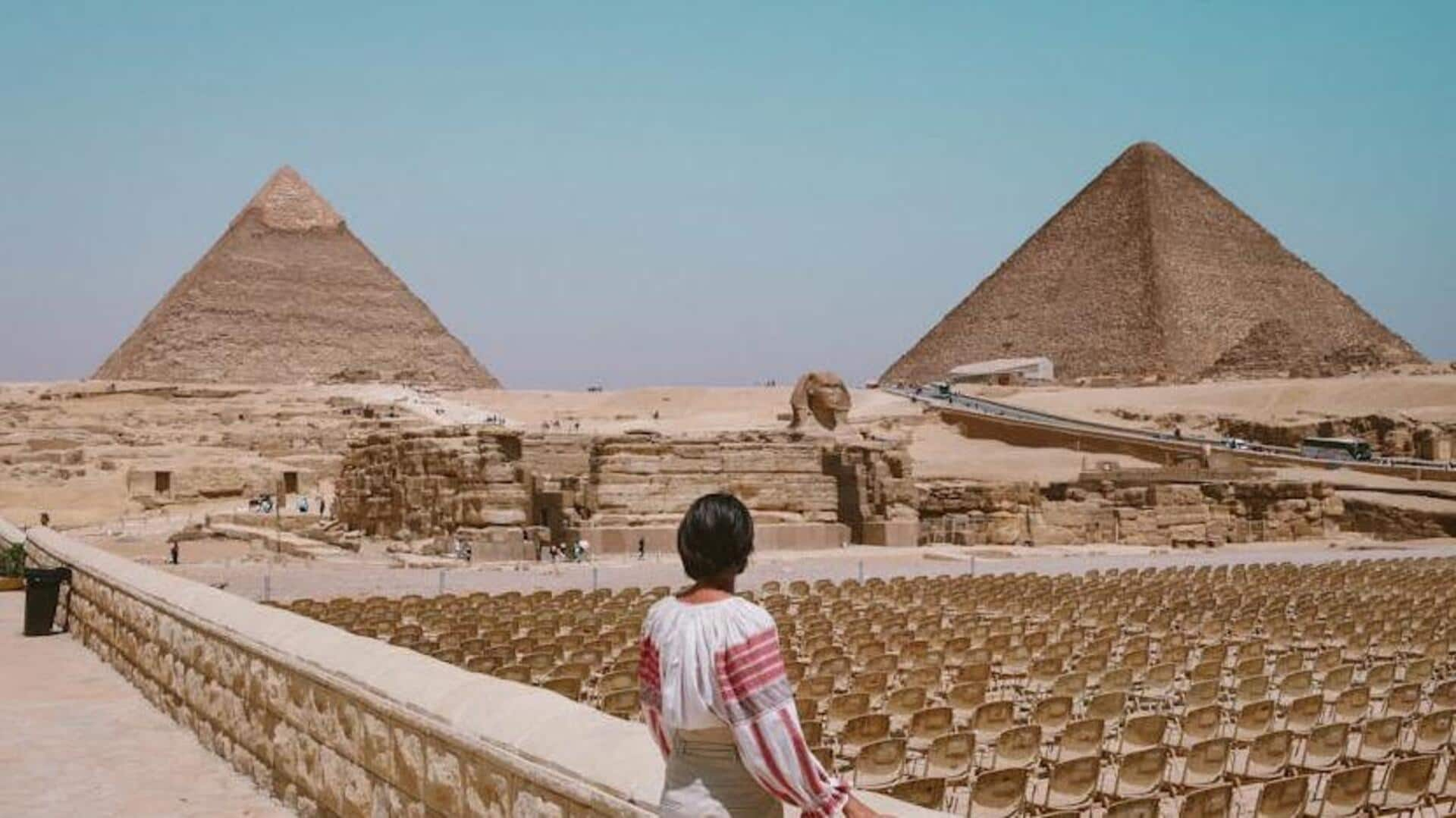
Witness Cairo's hidden architectural marvels
What's the story
Cairo, Egypt's sprawling capital, is a treasure trove of history that spans centuries. While the Pyramids of Giza steal most of the limelight, the city is dotted with lesser-known architectural wonders that tell tales of its rich past. From ancient mosques to historic houses, these overlooked gems offer a deeper understanding of Cairo's cultural and architectural heritage.
Recommendation 1
The Mosque of Ibn Tulun
Built in the ninth century, the Mosque of Ibn Tulun is one of Cairo's oldest and largest mosques, yet it remains largely unnoticed. Its design features spacious courtyards and a unique spiral minaret, inspired by ancient Mesopotamia. This mosque offers a quiet retreat from the city's chaos, inviting visitors to immerse themselves in the essence of Islamic architecture.
Recommendation 2
Al-Rifa'i Mosque
Adjacent to the Sultan Hassan Mosque, Al-Rifa'i Mosque stands out, blending Mamluk and Ottoman styles. It serves as the final resting place for members of Egypt's royal family and notable figures like Shah Iran. Its grandeur is evident in its historical significance and the intricate Islamic calligraphy and craftsmanship that adorn its interiors, showcasing a rich architectural heritage.
Recommendation 3
The Hanging Church
Perched above Babylon Fortress's gatehouse, The Hanging Church (El Muallaqa) stands as one of Cairo's most distinctive Coptic Christian structures. Originating in the third century, it features a wooden roof shaped like Noah's Ark and houses ancient religious icons. Its elevated position offers a picturesque view over Old Cairo, making it a prime spot for those interested in early Christian architecture.
Recommendation 4
Gayer-Anderson Museum
Adjacent to the Ibn Tulun Mosque, the Gayer-Anderson Museum is located within two stunning 16th-century residences. It displays an extensive collection of Egyptian art, furniture, and artifacts, gathered during Major R.G. Gayer-Anderson's residence in Egypt. The museum itself is an architectural wonder, featuring rooms that have been well-preserved to provide insights into the traditional Egyptian way of life.
Recommendation 5
Beit El-Umma (House of the People)
Beit El-Umma, or House of Saad Zaghloul, reflects modern Egyptian history through its architecture and exhibits. This early 20th-century mansion is preserved to display Zaghloul's personal items and period furniture, showcasing European influences on Egyptian society. A visit offers a unique glimpse into Egypt's struggle for independence, providing insights into the life of one of Egypt's national heroes.